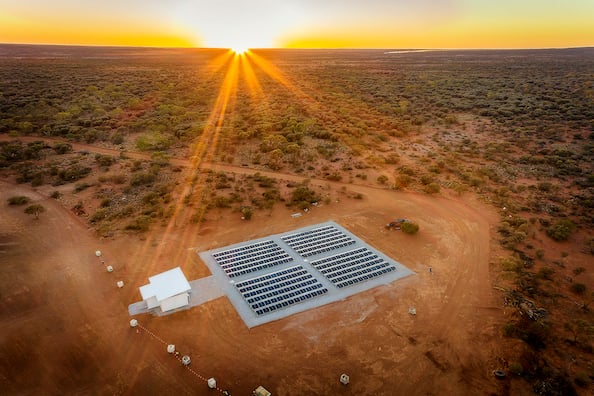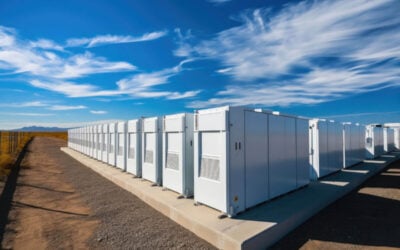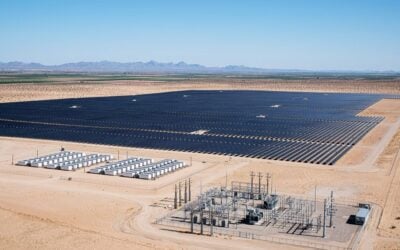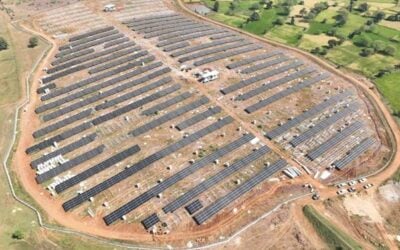
Success for project proposals combining solar PV with battery storage in Germany’s latest multiple technology tenders for renewable energy are proof of the importance of energy storage, the managing director of German energy storage association BVES has said.
The German Federal Network Agency ( Bundesneztagentur ) published the results of its third round of ‘Innovation Tenders’ on 18 August. Bidders had to put forward projects that combine at least two different eligible technology types per site that will share a grid connection point. Winners get a “fixed market premium” paid for their energy as well as market revenues they can earn.
Enjoy 12 months of exclusive analysis
- Regular insight and analysis of the industry’s biggest developments
- In-depth interviews with the industry’s leading figures
- Annual digital subscription to the PV Tech Power journal
- Discounts on Solar Media’s portfolio of events, in-person and virtual
A total of 250MW was auctioned for. The Bundesneztagentur said however that the auction was slightly undersubscribed, with 23 bids that didn’t quite add up to the 250MW cap. Due to this undersubscription, the regulator applied a statutory volume control mechanism, which meant bids were awarded until 80% of bid volumes of accepted bids was reached or exceeded. Six bids had been disqualified due to errors made in their bid proposals.
The auction resulted in 16 bids, 156MW, being awarded contracts. In the previous auction which closed in April, 258MW was awarded across 18 bids, from 509MW of bids received in total, which as the Bundesneztagentur noted was significantly higher than what was received this time out.
However, as with the previous auction, what was notable is that all of the projects which won combined solar PV with battery energy storage. In fact, this time out, all of the bid proposals received were solar-plus-storage.
“Innovation and climate protection in the energy sector are increasingly and inextricably linked to the topic of energy storage.This was once again proven by the results of the last Innovation Tender,” Urban Windelen, managing director of BVES told Energy-Storage.news.
“Without energy storage, there would be no safe, cost-efficient, and, above all, no green energy system. The decarbonisation of industry as well is impossible without energy storage.”
Germany was one of the global first adopters of battery storage technologies. But in the last couple of years, although German households have bought home energy storage systems in their thousands each year and commercial and industrial (C&I) sector deployment has also been steady due to the ability of businesses to control their electricity costs with batteries, the large-scale market has been subdued.
There are a number of reasons behind this. Among them is that frequency containment reserve (FCR) revenues have declined due to a saturated market, another is that the energy storage asset operators are not able to accrue revenues from multiple streams as easily as in markets like the UK.
There are still not regulatory definitions for energy storage that groups like BVES believe are adequate and energy storage systems are ‘double-charged’ fees for using the grid: once when they draw power from the grid and again when they input power as well.
Success of industry puts pressure on policymakers
Nonetheless, the Innovation Tenders have been a bright spot, and in the near future, European markets for grid-balancing applications like frequency regulation will be brought into closer coordination, which could offer more revenue opportunities.
Coming up soon is the introduction of a market for automatic Frequency Restoration Reserves (aFRR), for example, which will offer a combination of reservation (in €/MW/hour of availability) and activation payments (in €/MWh activated). In a recent webinar and Guest Blog for this site, experts at consultancy Clean Horizon explained the aFRR opportunity and how it could open up the market for energy storage. Germany is among countries set to implement the cross-European grid-balancing project, PICASSO, in Q1 2022.
A spokesperson for Tesvolt, a German designer and manufacturer battery energy storage systems, told Energy-Storage.news that the demand for large-scale storage systems up to 10MWh is currently increasing. The Innovation Tenders are a significant driver of this demand, along with a growing number of hydrogen projects. While Tesvolt’s activities are more focused on the booming C&I market, holding a 49% market share for systems between 30kWh to 1MWh in the country — and a 20% share across Europe — the national energy storage market in its home country “continues to play an important role for Tesvolt,” the company representative said.
In the latest tenders, ABO Wind and RWE were the only two bidders to submit and successfully receive approval for multiple projects, each winning two.
Premiums awarded through the auction are worth between €0.0399c (US$0.047) and €0.0548c/kWh, with a volume-weighted average of €0.0455c/kWh, which was slightly higher than the previous round’s €0.0429c/kWh.
RWE press spokesperson Guido Steffen told Energy-Storage.news that both of the utility company’s tender-winning projects will use bifacial PV modules and lithium-ion batteries. They will also be DC-coupled to optimise power generation and energy arbitrage. They will be the company’s second and third European solar-plus-storage projects, following a 14.4MW PV + 9.6MWh li-ion battery project at the site of Inden opencast lignite mine, the construction of which is currently underway.
Lignite mines, which need to be taken out of service for German to meet its decarbonisation objectives, offer a strong potential for siting renewable energy facilities, Steffen said, especially as the land they sit on will take decades to recultivate. More solar PV plants at such sites are to follow from RWE, the spokesman said.
RWE is also building large-scale battery storage facilities at two of its existing hydroelectric run-of-river power plants in Germany which are expected to come online by the end of next year. While the two awarded solar and battery projects in the tender are around the same size as the Inden project, totalling just over 30MW of PV and 10MWh of batteries, the group is also building some much larger solar-plus-storage plants in the US.
Meanwhile, BVES’ Urban Windelen told Energy-Storage.news that his group is working flat out to advocate for better regulatory conditions for energy storage and said that it was able to contribute to “significant progress in this area” during 2021. Windelen said that the expertise and competence of the German energy storage and technology sectors is high.
“When it comes to complex and cross-sectoral energy supply systems with integrated energy storage systems, Germany has a clear technical lead. This technical expertise is demonstrated by the stable growth of the industry,” the BVES managing director said.
“The advancement of the industry increases pressure on politics to develop an appropriate regulatory environment for energy storage. Regulation improvement is what BVES as an industry association is working on flat out. This year, in particular, we were able to make significant progress in this area, which will boost the market penetration of storage systems.”






